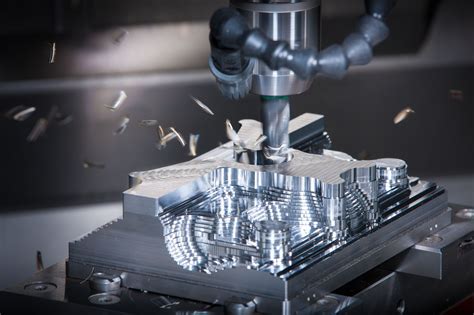Milling for Innovators: Creating Small Metal Parts with Flair
Milling is a powerful subtractive manufacturing process, allowing for the creation of intricate and precise metal parts. For innovators and designers, this technique opens a world of possibilities, especially when working with small, intricate components where aesthetics and functionality are equally important. This article explores the nuances of milling for creating small metal parts, highlighting its advantages, considerations, and the creative flair it enables.
What is Milling, and Why is it Ideal for Small Metal Parts?
Milling involves removing material from a workpiece using rotating cutting tools. Different milling techniques exist, including end milling (using a cylindrical tool), face milling (using a flat tool), and more specialized methods. Its suitability for small metal parts stems from its precision and versatility. CNC (Computer Numerical Control) milling machines offer exceptional accuracy, allowing for the creation of intricate geometries and tight tolerances – crucial for miniaturized components in various industries.
Choosing the Right Material for Your Small Metal Parts
The material selection significantly impacts the final product's properties and the milling process itself. Common choices for small metal parts include:
- Aluminum: Lightweight, readily machinable, and corrosion-resistant, making it ideal for prototyping and applications requiring low weight.
- Stainless Steel: Offers excellent strength, durability, and corrosion resistance, suitable for demanding applications. However, it's more challenging to machine than aluminum.
- Brass: Known for its machinability, corrosion resistance, and aesthetic appeal, often used for decorative or functional parts.
- Titanium: Extremely strong and lightweight, with excellent corrosion resistance. However, it’s difficult to machine and requires specialized tooling.
The choice depends on the specific application's requirements regarding strength, weight, corrosion resistance, and cost.
The Advantages of Milling for Small Metal Parts
- High Precision and Accuracy: CNC milling allows for incredibly tight tolerances, resulting in parts with exceptional accuracy and repeatability.
- Complex Geometry: Milling can create intricate shapes and features that are difficult or impossible to achieve with other manufacturing methods.
- Versatility: A wide range of materials can be milled, offering design flexibility.
- Customization: Milling enables the creation of highly customized parts tailored to specific needs.
- Prototyping: It's an ideal method for rapid prototyping, allowing for quick iterations and design refinements.
Challenges and Considerations When Milling Small Metal Parts
- Tool Wear: Small cutting tools can wear out quickly, especially when milling harder materials. Regular tool changes and careful selection of tooling are essential.
- Vibration and Chatter: Vibrations can affect accuracy and surface finish, especially when working with small, delicate parts. Careful machine setup and appropriate cutting parameters are critical.
- Workholding: Securely clamping small parts can be challenging. Specialized fixtures and workholding techniques are often necessary.
- Cost: The precision and complexity of milling small metal parts can result in higher costs compared to other manufacturing processes.
What are the Different Types of Milling Machines Used for Small Parts?
Several milling machines cater to the needs of creating small metal parts. These include:
- Benchtop CNC Mills: Compact and affordable, suitable for smaller projects and hobbyists.
- Small-Scale CNC Mills: Offer increased capacity and precision compared to benchtop models.
- Micro-Milling Machines: Specifically designed for extremely small and intricate parts, requiring highly specialized tooling and expertise.
How Can I Design for Mill-ability?
Designing for manufacturability is crucial for efficient and cost-effective milling. Consider these aspects:
- Draft Angles: Incorporating draft angles prevents tooling interference and ensures easy part removal.
- Wall Thicknesses: Avoid excessively thin walls that can be prone to breakage during machining.
- Undercuts: Minimize or eliminate undercuts, as they require complex tooling and increase machining time.
- Radius Corners: Use fillets and radii to avoid sharp corners that can damage tooling.
Finishing Touches for a Professional Look
Once the milling process is complete, finishing touches can significantly enhance the final product’s appearance and functionality. These may include:
- Surface Finishing: Processes like polishing, brushing, or anodizing improve surface aesthetics and corrosion resistance.
- Deburring: Removing burrs and sharp edges ensures safety and improves the overall appearance.
Milling offers a pathway for innovators to realize their visions in metal, allowing for the creation of small, intricate parts with both functional precision and aesthetic flair. By understanding the process, choosing appropriate materials, and addressing potential challenges, you can unlock the potential of milling to create truly unique and innovative small metal components.

